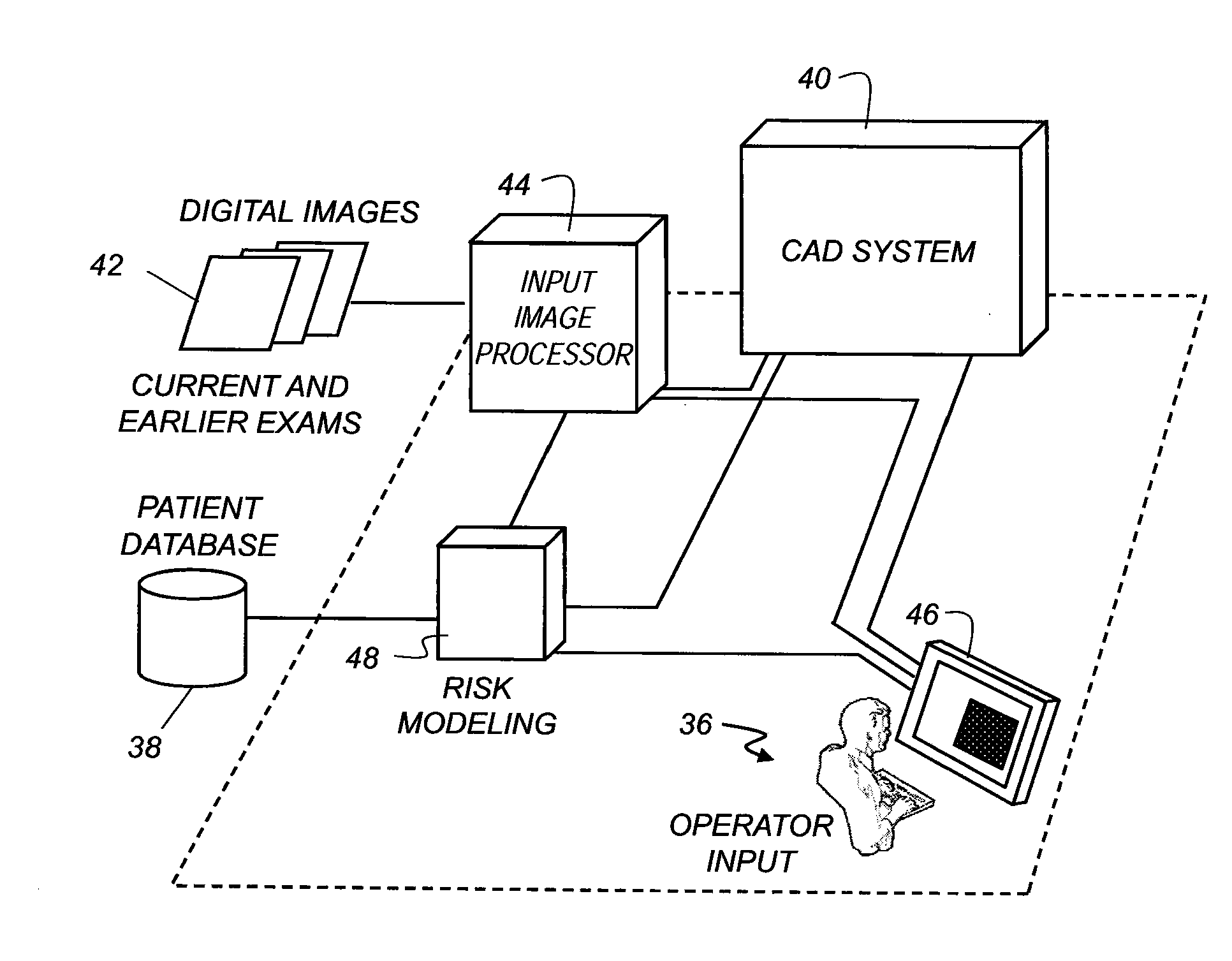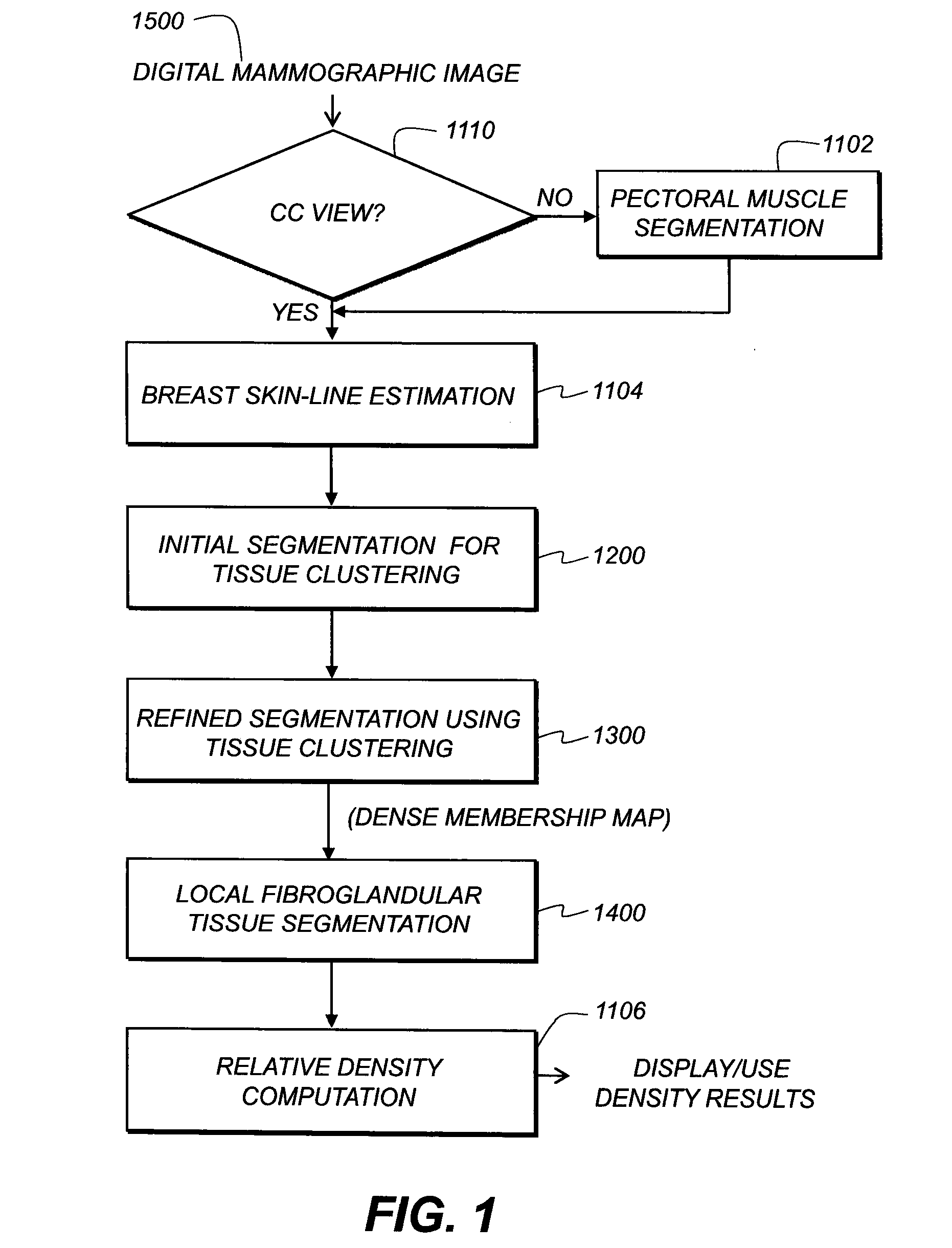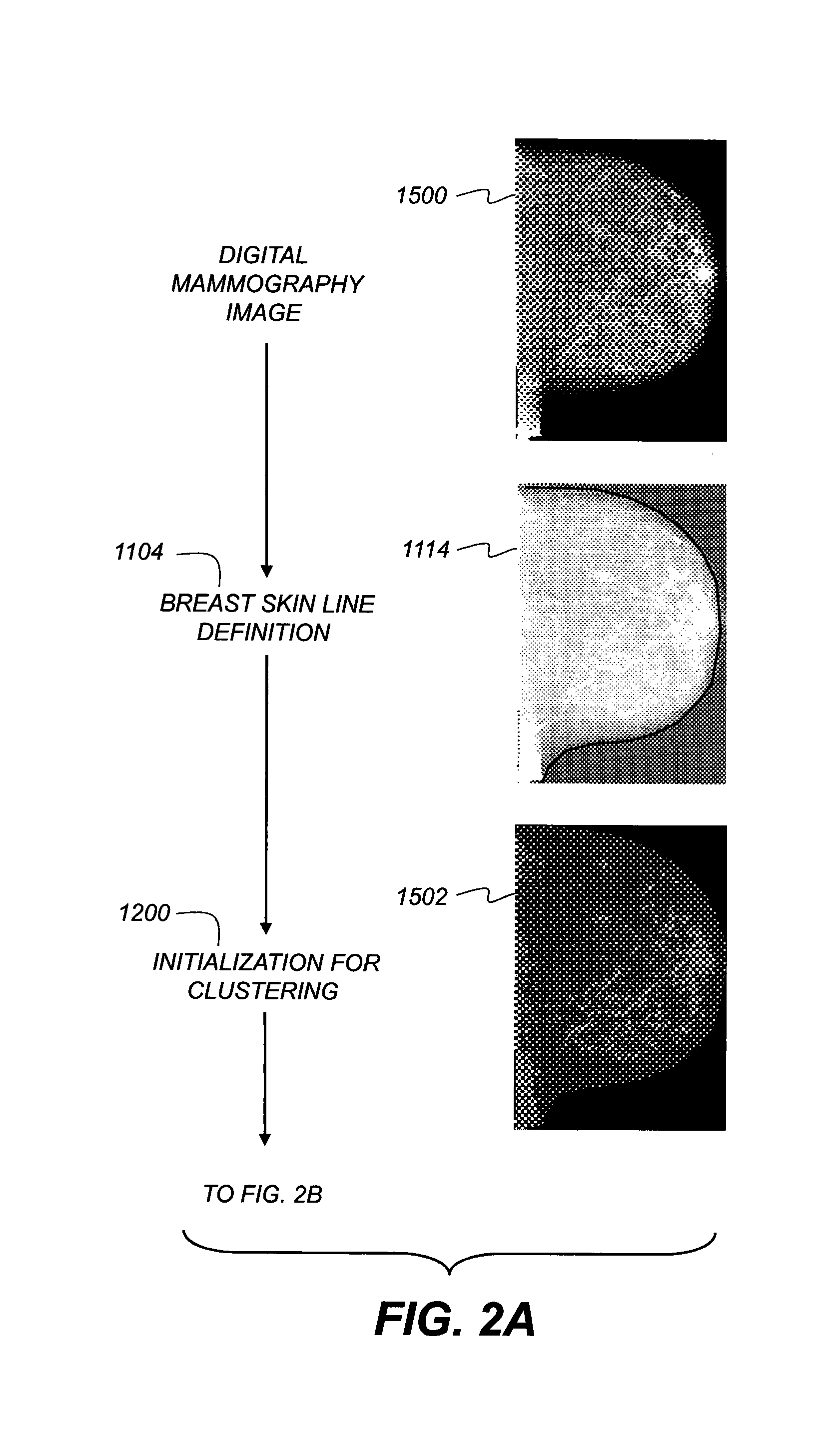Assessment of breast density and related cancer risk
- Summary
- Abstract
- Description
- Claims
- Application Information
AI Technical Summary
Benefits of technology
Problems solved by technology
Method used
Image
Examples
Embodiment Construction
[0029]The following is a detailed description of the preferred embodiments of the invention, reference being made to the drawings in which the same reference numerals identify the same elements of structure in each of the several figures.
[0030]Reference is also made to commonly assigned U.S. patent application Ser. No. 11 / 616,953 filed 28 Dec. 2006 and entitled “Method for Classifying Breast Tissue Density” by Luo et al.
[0031]For the detailed description that follows, the mammographic image is defined as f(X), where X denotes the pixel array and f(x) denotes the intensity value for pixel x in X.
[0032]In the context of the present disclosure, the term “dense tissue” is generally considered synonomous with fibroglandular tissue of the breast. Within the mammography image, this dense tissue is readily distinguishable from fatty tissue to those skilled in breast cancer diagnosis.
[0033]The logic flow diagram of FIG. 1 and graphical sequence of FIGS. 2A, 2B, and 2C show a basic sequence f...
PUM
 Login to View More
Login to View More Abstract
Description
Claims
Application Information
 Login to View More
Login to View More - R&D
- Intellectual Property
- Life Sciences
- Materials
- Tech Scout
- Unparalleled Data Quality
- Higher Quality Content
- 60% Fewer Hallucinations
Browse by: Latest US Patents, China's latest patents, Technical Efficacy Thesaurus, Application Domain, Technology Topic, Popular Technical Reports.
© 2025 PatSnap. All rights reserved.Legal|Privacy policy|Modern Slavery Act Transparency Statement|Sitemap|About US| Contact US: help@patsnap.com



